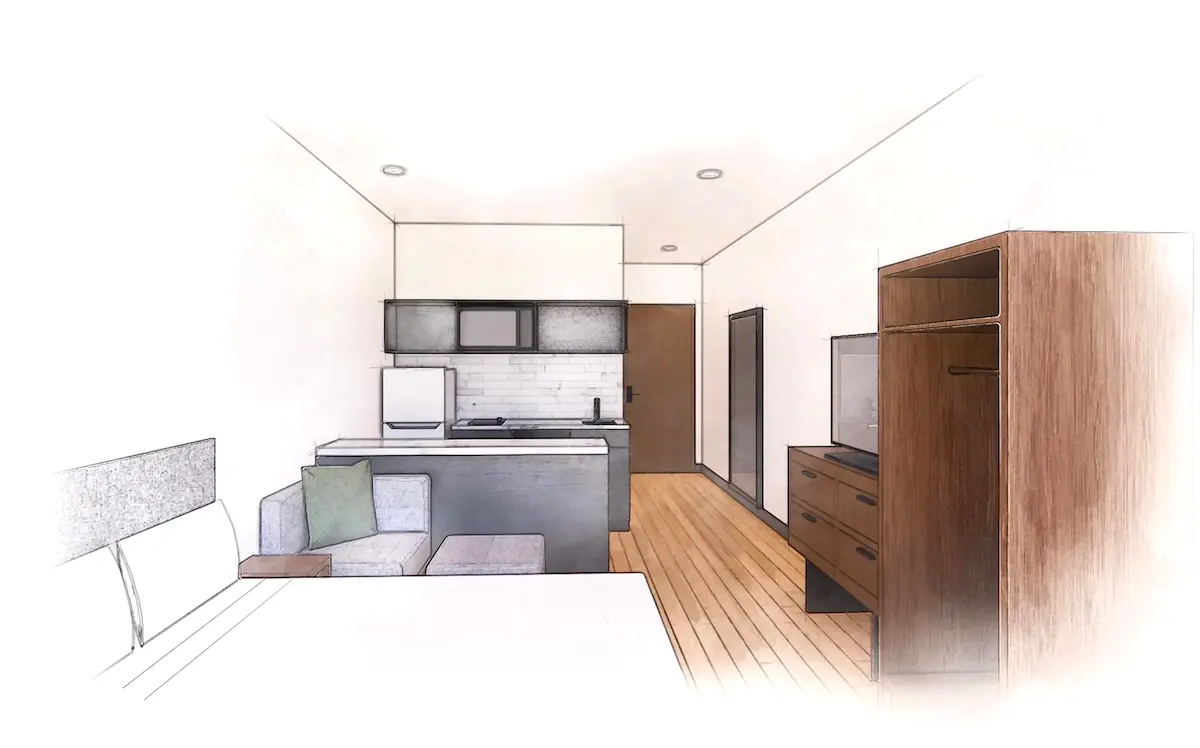Marriott is jumping on the extended stay bandwagon with another extended stay brand announcing a new entry into “[t]he affordable midscale extended stay” segment that will “deliver reasonably priced modern comfort for guests seeking longer stay accommodations in the U.S. & Canada.”
The new brand is not yet named but internal project names are often revealing, and this one is “currently being referred to as Project MidX Studios.”
They literally tell you the new chain is mid.
Marriott already has extended stay properties:
- Residence Inn
- Element
- Marriott Apartments
- Apartments by Marriott
So what they need of course is another extended stay brand, with little known detail other than it’s ‘mid’ and “from the physical product to the operating model” cheaper than its current products.
Project MidX Studios, expected to be Marriott’s most affordable cost-per-room product in the U.S. & Canada, is designed to enable accelerated speed-to-market with a low cost to build. The prototype model targets a build cost of $13 million to $14 million, requiring approximately 54,000 square feet of total building area for 124 studios. The brand is also expected to have a light operational cost model for owners and franchisees.

Credit: Marriott
For the “budget conscious consumer” they’re aiming to deliver room rates “around $80 per night, depending on the market and demand.”
A couple of weeks ago Hilton got ahead of itself announcing plans for a new, downmarket extended stay brand that didn’t yet even have a name or properties in the pipeline. The key selling proposition was that owners wouldn’t have to allocate much space to lobbies.
Marriott hasn’t announced any properties in the pipeline for this brand, either, but at least they’re honest in marketing the concept as mid.


This announcement as well as the recent announcement by Hilton comes down to the following:
1) It’s clear that domestically the big developers and franchisees no longer want to build full-service branded hotels. For Marriott, this is probably partly a reflection that in many markets there are simply too many Marriotts, Westins, Sheratons, Deltas, Renaissances, etc. to justify yet another full-service property. In markets without an existing full-service hotel, it’s simply too expensive to build and staff a full-service hotel. Developers and franchisees can make as much or more money with a limited-service hotel. Especially an extended-stay hotel with little to no amenities and servcies.
2) Let’s also be clear that these new extended-stay brands from Hilton and Marriott are 100% sure to be partially or fully automated. I do not expect a staffed front desk, at least not 24/7. Costs will be significantly reduced by replacing the front desk with a kiosk (as Premier Inn has done in the UK), self-service vending machines and kiosks for drinks or food, and no housekeeping.
I get that the big hotel companies need a lot of brands to justify growth. But what happens to the old brands? I don’t see anyone really building and opening new Alofts anymore. That brand seems to be just existing. I stayed at the Aloft in Wichita last year. It felt like walking into a W property circa 2006. It was a hip concept back then, but felt very dated and just completely out of place in Kansas. What about Four Points? Is anyone really building and opening new Four Points properties? I actually think that Four Points is a better brand than Courtyard but Courtyard seems to be what developers want to build when they want something more than a Fairfield but something less than a more upscale brand. At some point, Marriott has to discontinue old brands and convert existing properties to something else. I’ve noticed that a tremendous number of 1970s and 1980s Marriotts have become Delta in recent years.
Think you forgot one – doesn’t TownePlace already essentially fill this role?
“…expected to have a light operational cost model for owners and franchisees”
And we should expect no service, maybe they’ll figure out a way to get rid of all human employees.
“mid”…since ‘i’ and ‘u’ are adjacent on the keyboard, are we certain that Marriott didn’t mean “mud”?
Automated hotels sound a lot like glorified hostels. Wonder if there will be security concerns in hotels with such minimal staffing.
Hah! These are the kind of things that happen when you don’t have/listen to young staffers. See also Penn15 in NYC.
According to the Urban Dictionary, MID is Used to insult or degrade an opposing opinion, labeling it as average or poor quality.
Another definition: Basically saying “trashy,” “not so good,” “low quality,” “bad,” etc.
If MID hotels are the affordable midscale extended stay, if you stay at a problematic Marriott MID hotel, instead of getting totally Bonvoyed, would it be more Gen Z hip to say, I got “voyed,” or I got “bonned?”
With the Sheraton acquisition, it does feel like Bonvoy has too many brands. I know there is little-no-cost in maintaining them, but it is very confusing for the consumer. I think they are up to something like 35 different brands? I get the differentiation by price/type-of-service, but you don’t need 7 brands in every tier, IMHO.
How do you design an extended-stay hotel room with a full or partial kitchen but no dining room table?